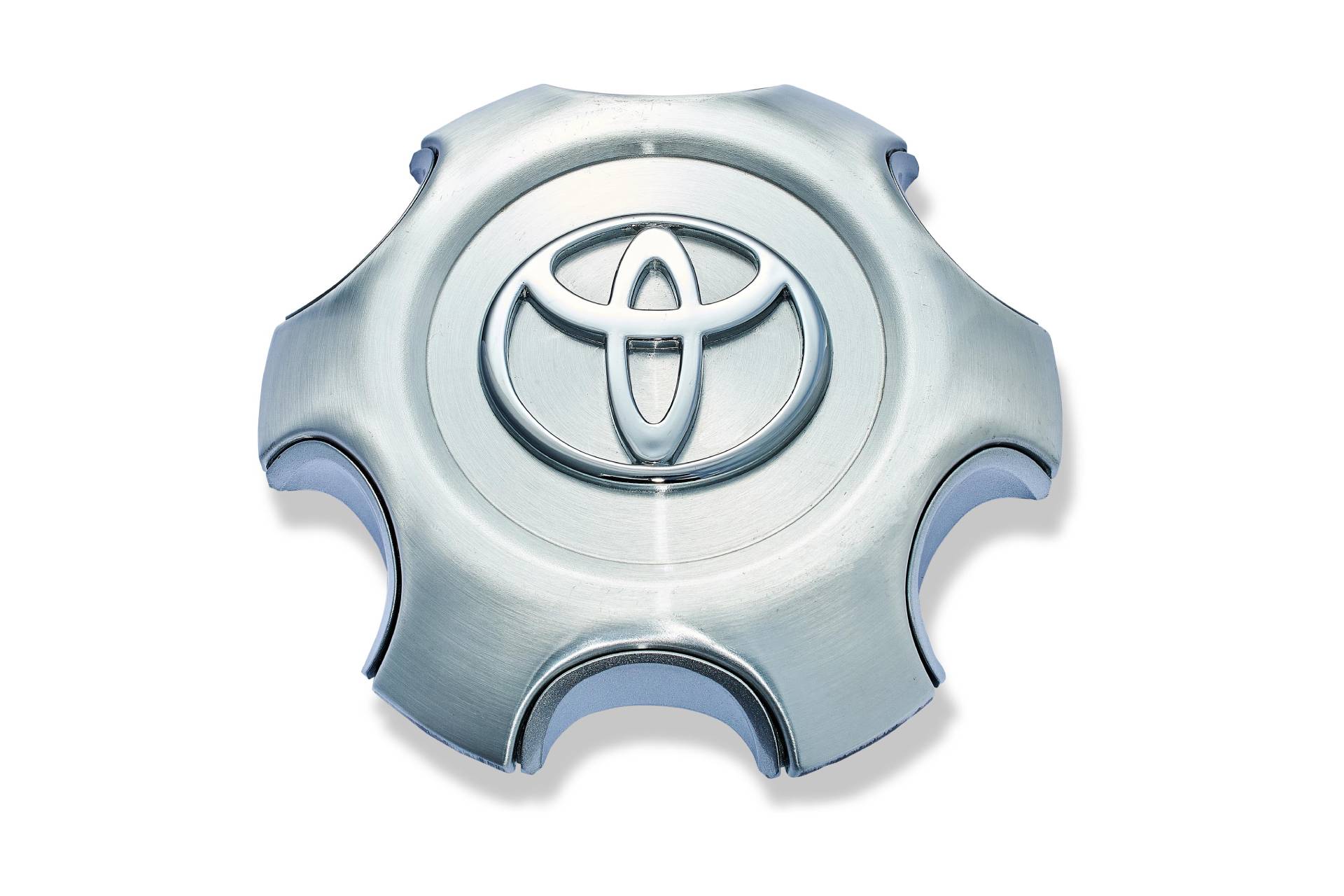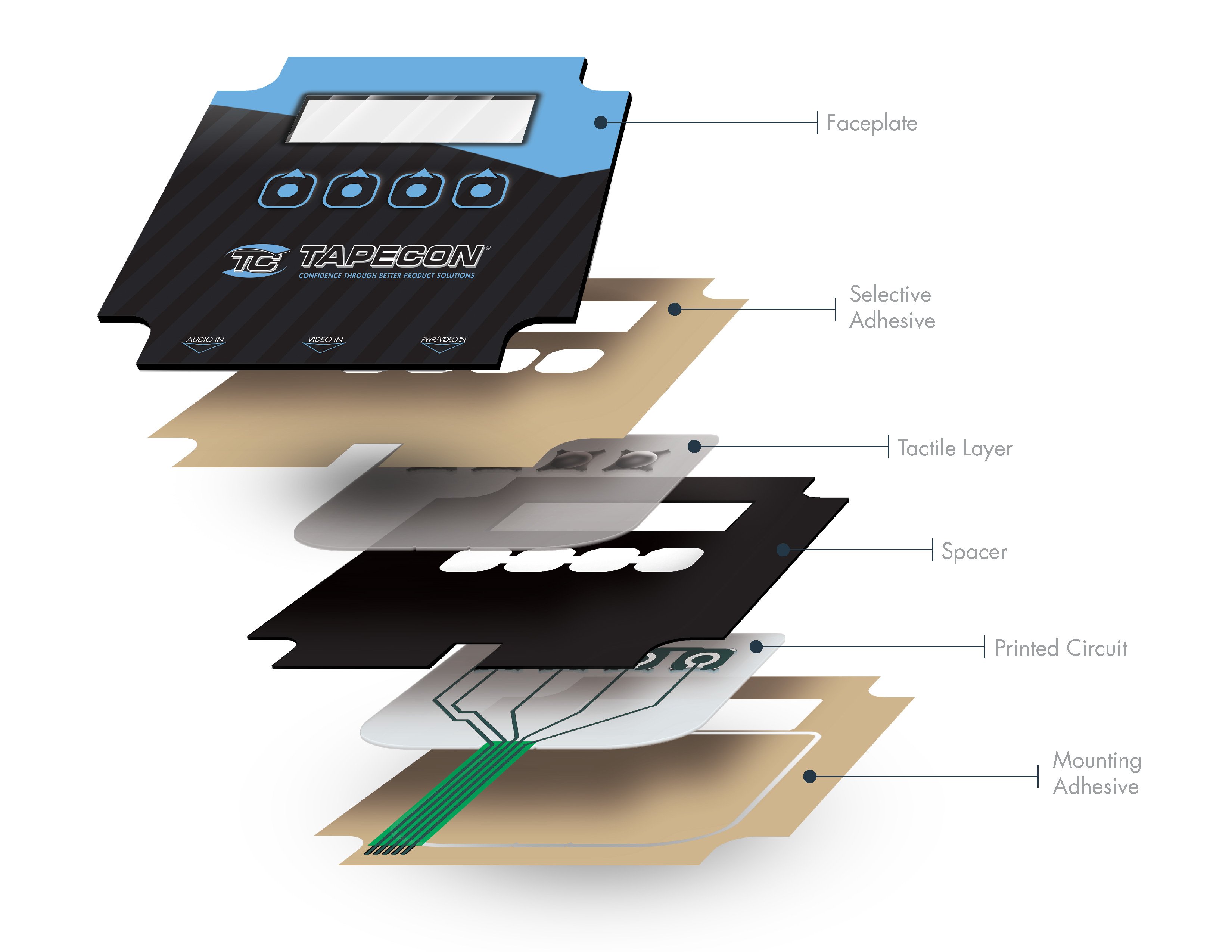Membrane Switch Manufacturer Delivering Fully Custom Solutions
Just How Membrane Switch Innovation Works and Its Function in Individual User Interface Style
Membrane button innovation is a sophisticated approach that integrates layered materials for touch-sensitive input. When pushed, its layout consists of visuals overlays, conductive layers, and glue components that engage. This interaction not only finishes an electric circuit however likewise influences the overall individual experience. Understanding the ins and outs of this modern technology reveals its significant influence on individual interface design, prompting questions about its applications and future developments in numerous industries.
Recognizing Membrane Switch Technology
Membrane switch innovation acts as a crucial part in contemporary individual interface design. This innovation incorporates graphic overlays, touch-sensitive membranes, and circuit layers to develop a compact, trusted input method for numerous gadgets. The layout usually contains numerous layers, consisting of a published graphic layer that permits users to connect with the gadget via responsive responses. Membrane switches are understood for their longevity, resistance to moisture, and simplicity of cleaning, making them suitable for atmospheres where typical mechanical switches may stop working. Their inconspicuous style allows seamless integration into devices, contributing to a sleek appearance. On top of that, Membrane switches can be customized with various colors, appearances, and icons, boosting individual experience and visual charm. This adaptability makes them popular in customer electronic devices, clinical tools, and commercial controls, where instinctive interaction is necessary. Overall, Membrane switch modern technology stands for a considerable improvement in exactly how customers involve with digital user interfaces.
Secret Parts of Membrane Switches Over
Membrane switches include numerous crucial components that add to their capability and style. The conductive layer materials, glue and assistance layers, and graphic overlay layout each play a crucial role in making sure excellent efficiency and user communication. Comprehending these elements is crucial for efficient user interface design.
Conductive Layer Products
Conductive layer materials play an essential duty in the functionality and integrity of Membrane buttons. These materials are in charge of completing electrical circuits when stress is applied to the button. Generally, a combination of conductive inks, such as silver or carbon, is made use of to produce these layers. Silver conductive ink is preferred for its remarkable conductivity and toughness, while carbon ink is commonly made use of for cost-effective applications. The selection of product affects not just the electric performance but likewise the total life expectancy of the button. Additionally, the thickness and structure of conductive layers can affect responsive responses and switch actuation. Choosing the ideal conductive material is crucial for ensuring excellent performance in diverse interface applications.
Sticky and Assistance Layers
Adhesive and support layers are crucial parts that add to the architectural honesty and performance of Membrane switches. These layers offer a robust foundation, making sure that the numerous aspects of the Membrane button remain firmly bonded and appropriately straightened throughout their functional life. The glue layer promotes the attachment of the switch to the underlying surface, using sturdiness against environmental factors such as moisture, temperature level variations, and mechanical tension. Support layers improve the button's rigidness, stopping contortion throughout use and contributing to a constant responsive feedback. With each other, these parts play an essential function in keeping the efficiency and long life of Membrane switches, eventually affecting the general user experience in user interface style.
Graphic Overlay Design
Usually overlooked, graphic overlay style plays a vital role in the capability and appearances of Membrane buttons. This style mainly acts as the user interface between the customer and the electronics, providing both aesthetic appeal and functional clearness. Efficient graphic overlays make use of color, typography, and symbols to direct customers in understanding and maneuvering controls device functions. The option of materials impacts sturdiness and responsive feedback, ensuring the overlay withstands wear while preserving a positive user experience. Additionally, exact placement of the overlay with the underlying components is essential for excellent efficiency. In final thought, thoughtful visuals overlay design improves functionality, adds to brand identity, and eventually affects customer complete satisfaction in tools utilizing Membrane switch technology.
The Production Refine of Membrane Switches Over
The production procedure of Membrane switches over includes numerous important steps that guarantee performance and longevity. A visuals overlay is developed, including individual interface components and branding. This overlay is printed onto an adaptable substratum, typically polyester or polycarbonate, using precision printing strategies to determine quality and shade accuracy.Next, adhesive layers are used, adhered to by the assimilation of conductive traces, commonly made from silver or carbon, which are crucial for electrical connection. These traces are etched or screen-printed onto a different layer. Hereafter, a spacer layer is included in create the needed void between the circuit and the overlay layer, enabling tactile feedback when activated.Finally, the parts are constructed and tested for high quality guarantee, assuring that each Membrane switch meets the required requirements for efficiency and dependability. This precise procedure causes a durable product suited for numerous applications in individual interface design.
Benefits of Utilizing Membrane Switches Over

Membrane changes offer various advantages that make them a favored option in user interface style. One substantial benefit is their portable and lightweight nature, enabling structured layouts in numerous applications. Additionally, Membrane switches give a secured user interface, shielding versus dirt, wetness, and pollutants, which improves longevity and reliability. They are also very personalized, allowing designers to create unique graphics and formats customized to certain individual needs.Another benefit is their cost-effectiveness, as they usually call for less material and labor contrasted to standard switches. The responsive responses of Membrane switches can be crafted to improve customer experience, providing a gratifying action without the mass of mechanical parts. Moreover, Membrane buttons can be easily integrated into varied settings, such as medical tools, commercial tools, and customer electronic devices. In general, these benefits emphasize the expanding appeal of Membrane buttons in modern interface style.
Applications in Different Industries
Commonly used throughout numerous sectors, Membrane button modern technology has actually located its place in applications ranging her latest blog from medical devices to consumer electronic devices. In the healthcare market, these switches are important to gadgets such as diagnostic devices and client tracking systems, using long lasting, easy-to-clean interfaces that endure sanitation procedures. The auto market uses Membrane buttons in control panels and control board, giving trusted procedure in tough environments.Consumer electronic devices, consisting of home devices and video gaming consoles, gain from the sleek layout and customizability of Membrane switches, boosting individual interaction. In addition, industrial machinery uses these buttons for control board, guaranteeing resistance to dust and moisture while maintaining functionality.Moreover, the aerospace and military industries use Membrane buttons for sturdy applications, where integrity and performance are essential. In general, Membrane switch modern technology serves varied markets by integrating functionality, durability, and visual appeal, making it a flexible choice for contemporary interface.

Creating Interface With Membrane Changes
When making individual interfaces with Membrane buttons, mindful factor to consider of both performance and visual appeal is crucial. Membrane switches offer a sleek, low-profile style that can improve aesthetic allure while preserving usability. Designers should focus on switch format, making certain instinctive placement for ease of operation. The tactile feedback provided by the Membrane switch is important; it can impact individual satisfaction and total experience.Additionally, shade and graphic components ought to line up with the look these up brand identification, reinforcing acknowledgment and knowledge. Picking long lasting materials that withstand wear and tear is also essential, as longevity contributes to usability over time. Incorporating backlighting can enhance visibility in various illumination conditions, additionally enhancing customer interaction. Ultimately, a properly designed Membrane switch user interface balances both kind and function, making sure that the user experience is both reliable and engaging, satisfying the needs of diverse applications throughout sectors.
Future Patterns in Membrane Switch Innovation
As Membrane button technology develops, the integration of smart capabilities is becoming progressively noticeable. These developments make it possible for enhanced interactivity and connectivity within interface (membrane switch manufacturer). In addition, the shift towards green materials shows a growing dedication to sustainability in design techniques
Smart Membrane Switches Over

Eco-Friendly Products Usage
Among the improvements in Membrane button technology, a substantial pattern is arising towards the use of green materials. Suppliers are progressively focusing on sustainability by integrating non-toxic inks and naturally degradable plastics, reducing ecological impact. This change not just lines up with international environmental criteria but additionally addresses consumer demand for greener products. Developments in material scientific research have made it possible for the growth of sturdy, environment-friendly choices that maintain performance without endangering quality. These products supply comparable capability to traditional choices while decreasing waste and toxicity. As markets become extra eco-conscious, the integration of sustainable methods in Membrane button production is expected to increase, reinforcing a commitment to environmental obligation and leading the means for more sustainable interface remedies in the future.
Often Asked Concerns
Exactly How Do Membrane Switches Over Differ From Conventional Mechanical Switches?
Membrane switches over differ from traditional mechanical buttons largely in building and construction and procedure. They make use of versatile layers that develop a secured interface, whereas mechanical buttons depend on physical movement and contact, causing distinct sturdiness and responsive responses features.
Can Membrane Switches Be Personalized for Details Applications?
Membrane switches can undoubtedly be tailored for details applications - membrane switch manufacturer. Manufacturers design them to meet distinct demands, enabling tailored layouts, graphics, and capabilities that boost user interaction and fit particular operational needs successfully
What Is the Life-span of a Membrane Switch?
The lifespan of a membrane button typically ranges from 1 to 5 million actuations, depending upon aspects such as worldly top quality, ecological conditions, and usage regularity. Normal screening can assist determine its durability and dependability in applications.
Are Membrane Switches Immune or water-proof to Chemicals?
Membrane switches can be developed to be water-proof and immune to chemicals, depending upon the products made use of and making procedures. Correct securing and protective finishings boost their durability in various ecological conditions and applications.
How Do Membrane Switches Influence Gadget Energy Intake?
Membrane buttons can considerably influence gadget energy usage by ensuring reliable operation. Their reduced power needs throughout activation aid decrease power use, contributing to longer battery life and general improved efficiency in digital gadgets. Membrane buttons are known for their durability, resistance to dampness, and simplicity of cleaning, making them appropriate for environments where traditional mechanical buttons might stop working. The automobile industry employs Membrane switches in control panels and control panels, providing trustworthy procedure in difficult environments.Consumer electronic devices, including home devices and gaming consoles, advantage from the smooth design and customizability of Membrane switches, enhancing customer communication. Furthermore, industrial machinery uses these buttons for control panels, making certain official statement resistance to dirt and moisture while preserving functionality.Moreover, the aerospace and military industries make use of Membrane switches for tough applications, where integrity and efficiency are vital. The advancement of Membrane button modern technology is entering an interesting stage with the appearance of clever Membrane buttons, which incorporate advanced functions and capabilities. Membrane switches over differ from typical mechanical switches mostly in building and construction and operation.